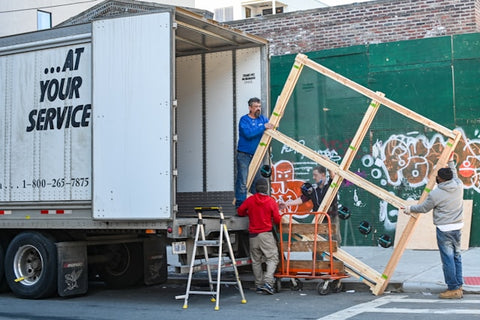- Home
- Shop
- Living
- Blog
- MIKOLITE
- SinterTech
- About
- Gallery
- Sign in
April 22, 2024
Downsizing before a move is an effective strategy for anyone looking to transition to a new space with ease and efficiency. It offers a unique opportunity to sift through personal belongings and decide what is truly necessary before professional movers begin to transport your items. This process not only simplifies the moving experience but also provides a fresh start in the new home, free of clutter and filled only with items that serve a purpose or bring joy.
The act of downsizing can be a practical approach to managing one’s possessions especially when moving to a smaller space. It involves a thoughtful evaluation of each item’s usefulness and emotional value, helping individuals to prioritize and retain only what is essential. With fewer items to pack, transport, and arrange, the move becomes significantly less daunting, allowing for a smoother transition.
Having a clear plan is crucial during downsizing. It is important to assess the dimensions and layout of the new space to determine which items will fit and function well within it. Starting this process early gives individuals ample time to declutter methodically, without the rush and stress that can accompany last-minute preparations. A well-executed downsizing effort leads to less clutter, more space, and a refreshed sense of simplicity in one's living environment.

Developing a Downsizing Plan
A successful downsizing plan merges strategic decluttering with time management to ensure a smooth transition to your new home. It involves assessing what you truly need, setting milestones, and tackling your belongings systematically.
Assessing Your Needs
One begins by taking inventory of their belongings to determine what is essential. This should be approached room-by-room, creating categories for items such as furniture, clothing, and kitchenware. Assessing your needs helps to organize your possessions effectively, identifying duplicates and items that no longer serve a purpose.
Creating a Timeline for Your Move
Planning is key, so creating a timeline becomes a critical step in the downsizing process. Start by setting a moving date and then work backward, allocating enough time for each decluttering phase. This approach ensures that one does not rush through the sorting process, which can lead to unnecessary stress or the retention of superfluous items.
Setting Goals for Decluttering
Setting clear, achievable goals for decluttering can streamline the entire process. Goals might include reducing the volume of belongings by a certain percentage or ensuring each room is decluttered by a specific date. Establishing these targets helps maintain focus and measure progress throughout the downsizing journey.
Executing the Downsizing Process
Downsizing before a move entails deliberate decision-making and organization to reduce clutter. The process involves sorting belongings, deciding on which furniture to keep, and considering sales avenues for unwanted items.
Sorting and Categorizing Items
When beginning the downsizing process, it's efficient to organize items into categories such as electronics, books, clothing, and makeup. Each category should then be evaluated item by item. Important documents, photos, and DVDs may hold sentimental value and require careful consideration before deciding to keep or part with them.
Making Decisions on Furniture
Furniture decisions should be informed by the space and layout of the new home. If a piece won't fit or doesn't match the intended aesthetic, one may opt to sell or donate it. Measuring spaces and creating a floor plan for the new home can guide these decisions more accurately.
Organizing a Garage Sale or Online Sale
For items designated to be sold, one can arrange a garage sale or list them on online marketplaces. Garage sales work well for a variety of items, offering a quicker way to declutter. Facebook Marketplace and Craigslist are useful for targeted sales, reaching buyers seeking specific items.
Remember that successful downsizing before a move not only clears space but can also provide a sense of relief and a fresh start in a new home.

Packing and Moving Strategies
When planning a local move, efficient packing and thoughtful organization can expedite both packing and unpacking. Emphasizing careful planning and the use of quality supplies ensures belongings are secure during transport.
Efficient Packing Tips
Materials and Supplies:
Packing Steps:
Special Considerations:
Strategies for a Smooth Moving Day
Moving Plan:
Organization on the Day:
Transport and Unpacking:
Adjusting to Your New Space
When moving into a new living space, the transition involves not just relocating items but adapting your lifestyle to fit within a potentially different layout and storage capability.
Maximizing Storage and Organization
In the new space, the precise measurements and availability of cabinets, closets, and shelving dictate how belongings are organized. It's essential to utilize built-in storage effectively and consider adding storage bins and other organizational tools to ensure that every item has a place. This helps reduce clutter and stress, making it easier to maintain a tidy living space. A useful strategy is to:
Embracing a Minimalist Approach
A minimalist approach allows residents to inhabit a smaller space without feeling overwhelmed. This involves prioritizing essentials and decor that align with one's lifestyle, thus eliminating excess. To embrace minimalism:
Through thoughtful organization and a shift towards a minimalist lifestyle, individuals and families can create a serene and functional new home.
Comments will be approved before showing up.
